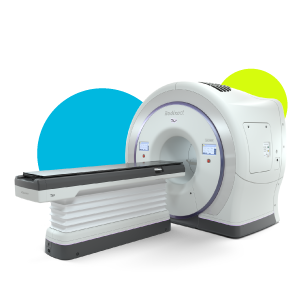Accuray recently hosted a Northern Europe User Meeting in London, United Kingdom (UK). The event, which marked the first occasion since 2019 for users from the Northern Europe region to meet in person, was a pivotal moment for the community. Over 40 registrants from seven countries, including the UK, Ireland, Sweden, and the Netherlands, seized the opportunity to learn about the remarkable work and research being done by users. The event also fostered re-engagement and the creation of new collaborations among the attendees.
Clinicians, medical physicists, and therapeutic radiographers came together to share their insights and experiences, creating a rich environment for knowledge exchange. The user committee designed a comprehensive program featuring sessions that spanned a wide range of topics, from the latest developments to clinical case studies and treatment protocols.
During the event, several presentations were given, including a talk by Professor Helen McNair on adaptive radiotherapy workflows. Her presentation highlighted the importance of considering roles, responsibilities, and training when implementing an adaptive workflow in the clinical department.
Radixact® System Session
In the Radixact® System session, four presentations were given:
- Andre Haraldsson, Ph.D., shared their initial experience with Radixact Synchrony® tracking cancer in the prostate and lung. Dr. Haraldsson concluded that Synchrony tracking has a high level of accuracy and the tracking algorithm is robust.
- Andrew Dumbill and Sallie Melsom from University Hospitals Birmingham, UK, discussed Total Body Irradiation (TBI) with TomoDirect™. They presented their move from using extended source-to-surface distance TBI on the C-arm linac to TomoDirect delivery using the Radixact System.

- Nathan Corradini, Chief Physicist at Gruppo Ospedaliero Moncucco, Switzerland, evaluated the Radixact MLC with a Real-time Feedback System. The study objectives were to evaluate the measured leaf open time (LOT) errors and plan latencies on the current system for a large patient cohort, to evaluate the variation in sinogram delivery (repeatability test), to determine if a correlation exists between plan latencies and anatomical treatment site and to estimate the clinical impact on target dosimetry due to latencies. Mr. Corrandini concluded that the MLC of the Radixact System is reliable and since January 2024, patient-specific quality assurance (PSQA) optical sensor data report generation & databasing have been implemented.
- Sallie Melsom and Charlotte Clifford, University Hospitals Birmingham, UK, presented the commissioning and clinical implementation of ClearRT®. They gave an overview of required calibration and QA, as well as kV CTDI free-air and output, Hounsfield unit, and field of view (FOV) checks. They also shared imaging protocols, results from the MVCT and ClearRT audit and image quality including patients with artificial hips.
CyberKnife® System Session
Four centres presented their work on the CyberKnife® System:
- Dr Maris Mezeckis from the University of Latvia presented results from the treatment of intermediate unfavourable, high, and very high-risk prostate cancer with radiosurgery. Dr. Mezeckis found that SBRT can be applied in all risk groups of prostate cancer. Both homogeneous and focally escalated SBRT provide acceptable toxicity and biochemical control results with a minor impact on quality of life. ADT can postpone biochemical relapse after SBRT, but its influence on prostate SBRT long-term results and survival needs further clarification.

- Dr Maaike Milder, a medical physicist from Erasmus Cancer Institute in the Netherlands, presented their unique online adaptive technique on the CyberKnife System equipped with in-room CT. She shared previous work on retrospective inter-fraction motion in locally advanced pancreatic cancer (LAPC) and prospective plan of the day for oligometastatic lymph node metastases. The common challenges with these techniques were the underdosage of the tumor due to the location of the organs at risk (OARs) and highly mobile OARs. With these challenges in mind, their new aims were to look at options for adaptive treatment for SBRT of LAPC and increase the dose to the oligometastatic lymph nodes without increasing toxicity. They found that about 30% of fractions did not require adaptation for LAPC. However, for the remaining fractions, a time-restricted replanning technique was comparable to full replanning and solved 90% of the plan violations, allowing replanning within 3 minutes. A library of plans was available for the abdominal lymph node metastases. This was a therapeutic radiographer-led procedure; plans were chosen with the highest dose to target without exceeding OAR constraints. Using Incise™ MLC and VOLO™ helped increase delivery times and optimize optimization times faster.
- Geoff Hayes and Timothy Jackson from Queen Elizabeth Hospital, Birmingham, presented ‘Out of Plan Doses for Intracranial CyberKnife Treatments’. This extremely interesting presentation examined published data on intracranial cancer risk in distant and proximal brain locations compared to the expected risk in the general population. They found that the risks were higher than expected and that the CyberKnife System was an effective treatment option.
- Honorata Chajecka-Szczygielska from the Royal Marsden Hospital presented a way to partially outline the bowel. This novel technique reduced time spent on bowel outlining lowered the sample number and produced a homogeneous dose distribution. Some disadvantages were that optimizing with partial bowel may introduce higher dose spikes and additional clinical goal parameters were required to ascertain that the whole bowel dose is tolerable.
Accuray Northern Europe User Meeting was a resounding success. Attendees shared their research, insights, and experiences, learning from one another. We are excited to meet again next year.









